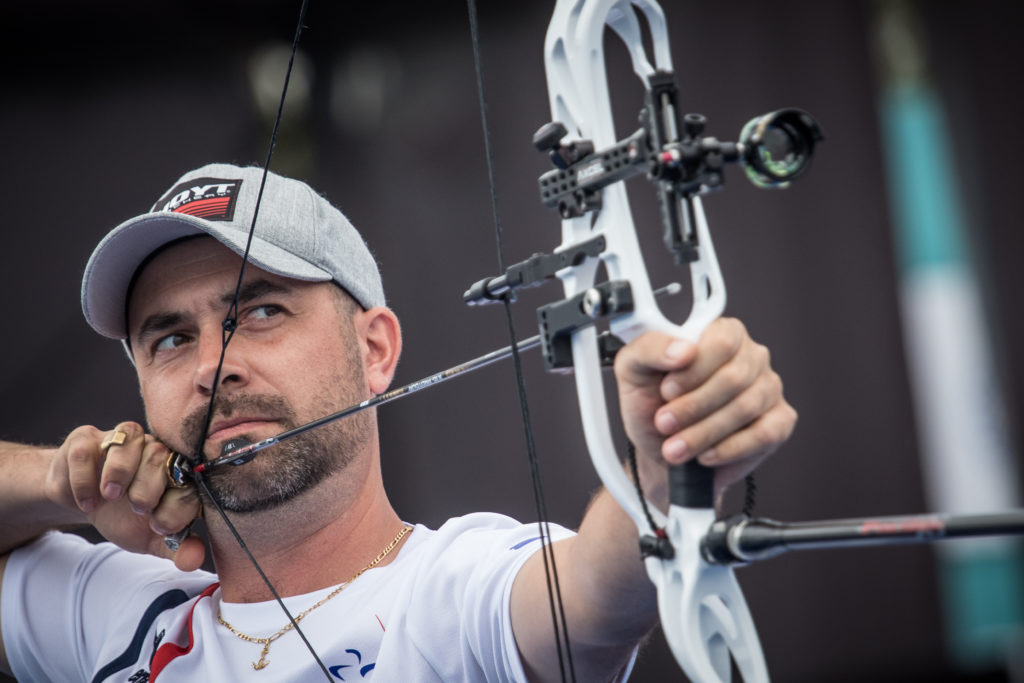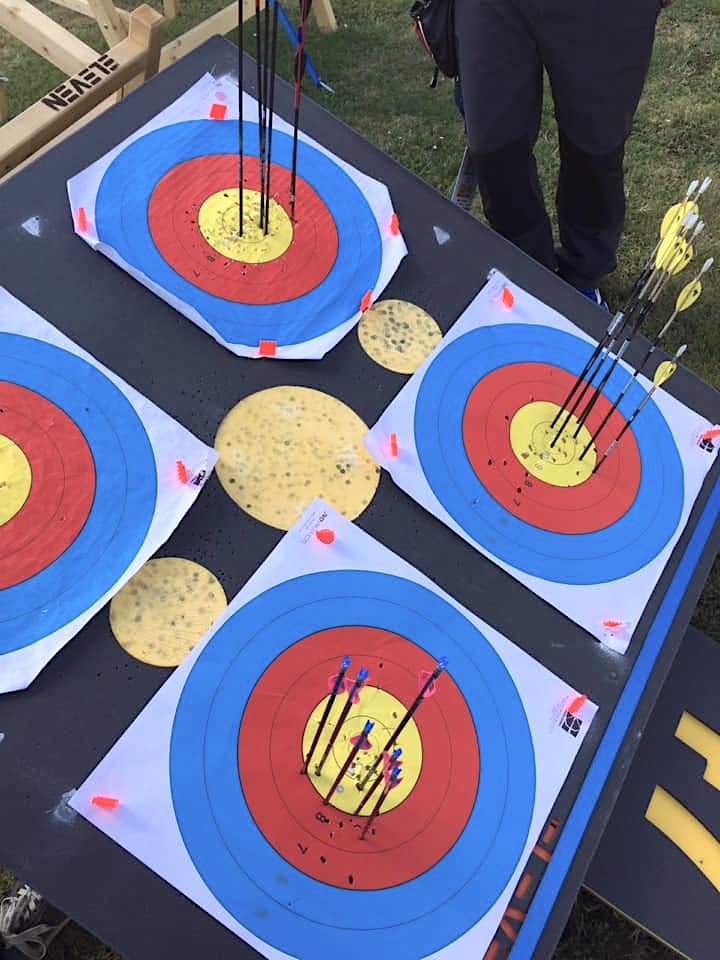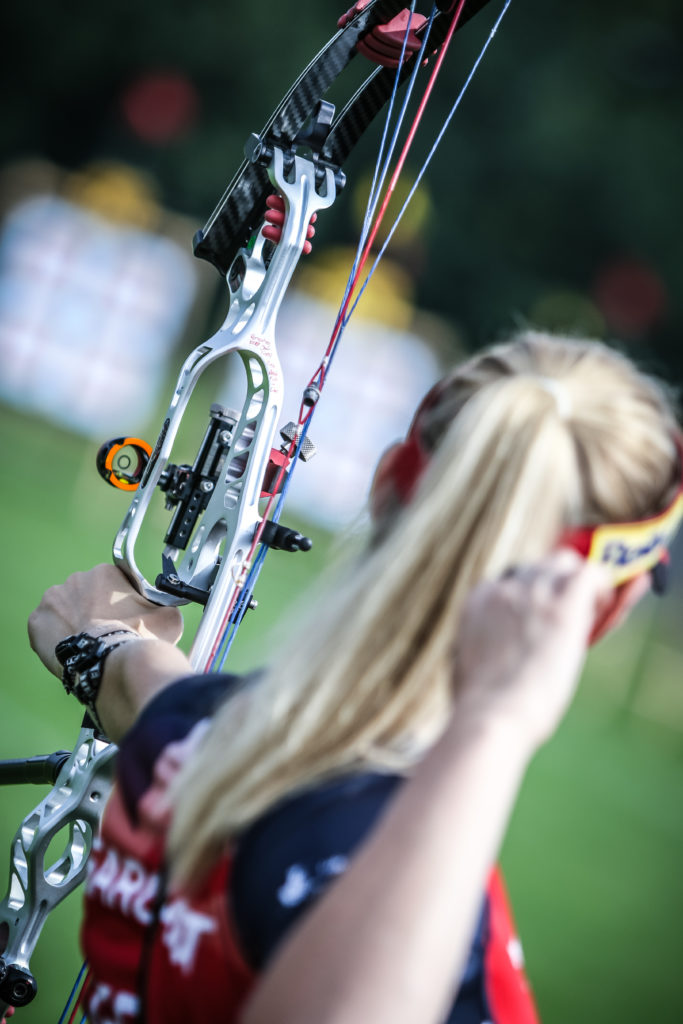Our expert panel answers your questions, so send them in to john.stanley@futurenet.com
Q: Can you explain a bit about what types of back tension release aids are available? And should I use one with a click?
Duncan Busby says: Using a back tension technique is widely considered to be the most accurate and consistent way to execute a shot no matter what style of release aid you choose to use. But for those who are looking to fully commit to back tension or want to remove the temptation of a trigger release, a pure back tension release aid is a must.
Even if you want to return to using a trigger style release aid, a pure back tension release is often the easiest way to learn correct shooting form. The idea behind a back tension release is to remove the ability to consciously activate the shot; as there is no trigger you cannot simply decide to hit it to make the shot go; sometimes known as punching.
Instead you must slowly increase the amount of pressure in your shot until the release activates, thus removing the conscious decision to fire and the likelihood of any problems this can bring.
There are two main types of back tension release aid; hinge and resistance. Both are activated by increasing the pressure in your shot as you pull against the cam stops or wall, but they each use slightly different firing mechanisms.

A hinge is activated by the rotation of the release handle; this twisting movement pulls the hook, which is attached to your d-loop, off a half-moon shaped sear and triggers the release.
The speed of this release action is altered by adjusting the angle and position of the half moon; some models also feature a safety catch which ensures that the release cannot fire whilst you are drawing it.
A resistance release is triggered once it reaches its activation weight; this is usually set at a few pounds above your bows holding weight, so it is important that the safety catch is engaged whilst you draw your bow.
The activation weight is altered using the springs inside the mechanism and will only fire once the safety catch has been disengaged and the set pressure has been reached.
The main complaint about back tension release aids is that there is no warning that they are about to go off, which can make it difficult to time your shot well or to ensure you are aiming at the centre when the shot finally breaks.
To remedy this some hinge style releases are made with an optional click which activates shortly before the release goes off, this allows you to choose whether to finish executing the shot or to draw down if you aren’t ready.
Most archers who use a click set it so that it activates once they are correctly anchored in their reference point, but before they begin to aim and execute the shot; thus ensuring their shot is well timed.
The option of a click is a personal choice; some back tension purists say it interferes with the unconscious process of the shot and gives you back the control that a traditional back tension release is supposed to remove, therefore rendering it pointless. Whereas others believe it gives you the perfect balance of control and a subconscious shot.
If you are committed to trying a back tension release, make sure you test out a few different models, and if the thought of giving up total control of your shot seems daunting, try one with a click and find out what a difference back tension can really make to your shooting.
Q: In competition, because spinwings or similar damage so easily, what happens if every one of your arrows, say all six in the quiver, are damaged and need replacing?

Graham Potts says: You can attempt to fix them, but in competition, if this occurred prior to or during a Qualification Round, then the athlete would be able to make up no more than two ends of six arrows (outdoors) or three ends of three arrows indoors, subject to the timing of the shoot (See Rule 12.2.4).
If this happened prior to or during Elimination Rounds, then no equipment failure time is allowed. It’s a good lesson in why having enough spare arrows is essential!
[Editor’s note: this happened to compound archer Mariya Shkolna, albeit in practice, at the World Championships in Den Bosch, when a boss fell over in extremely windy conditions and damaged an entire target full of arrows. Thanks to her for the pic]
Thanks to Christine Hall for the question.
Q: How do I aim? I mean, really. Most of the advice seems to be ‘not to aim’.
Roy Rose says: Every archer, whether a recurver, a compounder, a longbow or crossbow exponent, whether one is a world champion, an Olympic medallist, a club shooter, a come and try beginner, even a kid in the back yard with a bamboo stick and string, shoots with the identical objective: to hit what they’re aiming at.
So immediately there is a logical focus on the aim, and most newcomers quite rationally perceive the main task in achieving accuracy is to centre one’s absolute attention on a steady and deliberate aim.
Today, however, the prevailing hypothesis and I endorse this belief, is that aiming is simply looking, and is a function of the subconscious, while the archer’s form and execution is the conscious priority. In short, focus on the back half and front half will take care of itself. This was not always the case.
Back in the fifties, great recurvers like James Caspers and Bill Bednar stood astride the line, indoor and out. In that pre-clicker era, there was an inordinate preoccupation with the aim.
Leading archers held at full draw for periods in excess of 30 seconds, and obviously one must assume that such a hold period must have been directly related to a precise aim. To the modern-day archer, this situation (and let me assure you these extended hold times did happen) seems almost ridiculous.
What does one do for half a minute at full draw? The advent of the clicker changed this form procedure, but not as markedly as one would expect. Hold period duration shortened, but was still lengthy by comparison with modern thinking.
Form and execution consensus centred on allowing the back half to run its course from practice memory, while the archer consciously focused on aim, aim, aim. Even up to the dominant era of Darrell Pace and Rick McKinney, hold time past the clicker was extended, suggesting that obtaining a positive aiming picture was still the major goal.

I remember vividly, obtaining super 8 film from Olympic champion Doreen Wilber in the late seventies, of Darrell Pace, in early international competition, taking a very deliberate 10 to 15 seconds by the clicker. Originally I thought it was filmed in slow motion!
Nonetheless, gradually the focus on the aim came under scrutiny by top shooters and coaches. The famous American coach, Terry Wunderle, advocated in his coaching articles a switch of conscious attention to form, rather than the aim – and the success of his team of shooters underlined his teachings.
Terry wrote back in the eighties, and I quote: “The archers I coach have won over 300 National and World titles, recurve and compound, and set over 400 records. These archers did not place the emphasis on aiming. The put the pin on, let it float, and concentrated on shooting the best form possible.
Trust your form and execute a good shot. Another quality coach and archer, Tim Strickland, also wrote: “Aiming is not big deal it is supposed to be. If you can see you can aim!” That sentence, “if you can see you can aim” became the focal point of today’s informed thinking.
Aiming is looking, and the reasons why have been enunciated definitively by a number of leading coaches and archers, including elite compounders Dave Cousins and Liam Grimwood. The reasons why are well worth underlining.
Our daily lives revolve around looking and aiming. Our eye has that self-centering capacity which enables us to function with precision in thousands of everyday situations. If we stare at the X, our subconscious will embrace this facility and we need to trust this capacity and allow the aim to operate below the cognitive level.
That’s the initial reason why looking works, and here are the reasons why conscious aiming doesn’t work. Firstly, because of our body sway we have no chance of a steady hold. Secondly, if we consciously correct, then we amplify what our eye is already centering and the result is a criss-cross, up and down pattern.
Even allowing for the super speed at which they eye to brain muscle operates, we still wind up with a perceived image which has actually changed, so in simplest terms, it’s time wasting to think you are obtaining a perfect aim at any particular point.
In view of all this, it is patently obvious that we all shoot better than we aim. Even the elite face these movement factors, yet perfect scores and incredible X counts are becoming regular occurrences. Just visually watching upper echelon shooters we can see bow arm movement and still extreme accuracy prevails.
So the bottom line is manifestly explicit. Aiming is looking. Allow the front of the line to be handled by the subconscious, and place your conscious effort on your back half form and execution. Trusting this arrangement is pivotal to your accuracy potential.
The days of extended hold periods, and the focus on aim, aim, aim are the past. For your future and your chance to be the best you can be, start by embracing the concept that aiming is, in fact, looking.
For the best field sports news, reviews, industry and feature content, don’t forget to visit our sister publications Sporting Rifle, Clay Shooting Magazine, Airgun Shooter, and Gun Trade News. And our YouTube shows The Shooting Show and The Airgun Shooter. For subscriptions, please visit https://www.myfavouritemagazines.co.uk/

